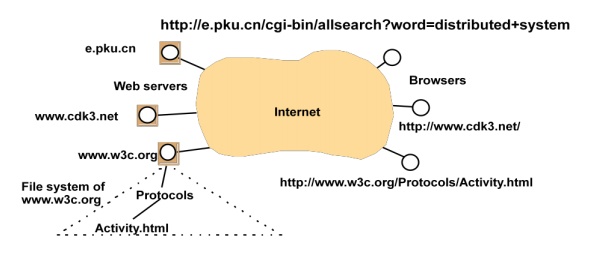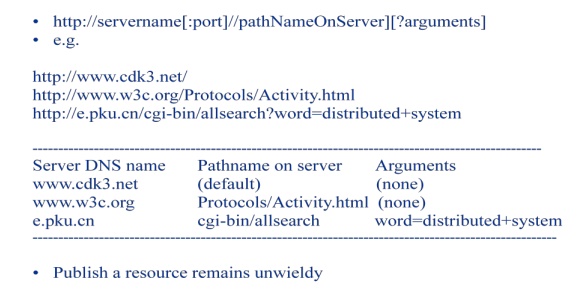Chapter: Distributed Systems : Introduction
Resource Sharing
RESOURCE
SHARING
o
Is the primary motivation of distributed computing
o
Resources types
o
Hardware, e.g. printer, scanner, camera
o
Data, e.g. file, database, web page
o
More specific functionality, e.g. search engine, file
o
Service
o
manage a collection of related resources and
present their functionalities to users and applications
o
Server
o
a process on networked computer that accepts
requests from processes on other computers to perform a service and responds appropriately
o
Client
o
the requesting process
o
Remote
invocation
A
complete interaction between client
and server, from the point when the client sends its request to when it
receives the server’s response
·
Motivation of WWW
o
Documents sharing between physicists of CERN
o
Web is an open system: it can be extended and
implemented in new ways without disturbing its existing functionality.
o
Its operation is based on communication standards
and document standards
o
Respect to the types of ‘resource’ that can be
published and shared on it.
·
HyperText Markup Language
o
A language for specifying the contents and layout
of pages
·
Uniform Resource Locators
o
Identify documents and other resources
·
A client-server architecture with HTTP
o
By with browsers and other clients fetch documents
and other resources from web servers
HTML

·
HTML text is stored in a file of a web server.
·
A browser retrieves the contents of this file from
a web server.
-The
browser interprets the HTML text
-The
server can infer the content type from the filename extension.
URL
·
HTTP URLs are the most widely used
·
An HTTP URL has two main jobs to do:
o
To identify which web server maintains the resource
o
To identify which of the resources at that server
Web servers and web browsers

HTTP URLs

HTTP
·
Defines the ways in which browsers and any other
types of client interact with web servers (RFC2616)
·
Main features
o
Request-replay interaction
o
Content types. The strings that denote the type of
content are called MIME (RFC2045,2046)
o
One resource per request. HTTP version 1.0
o
Simple access control
More features-services and
dynamic pages
·
Dynamic content
o
Common Gateway Interface: a program that web
servers run to generate content for their clients
·
Downloaded code
o
JavaScript
o
Applet
Discussion of Web
·
Dangling: a resource is deleted or moved, but links
to it may still remain
·
Find information easily: e.g. Resource Description
Framework which standardize the format of metadata
about web resources
·
Exchange information easily: e.g. XML – a self describing language
·
Scalability: heavy load on popular web servers
·
More applets or many images in pages increase in
the download time
Related Topics